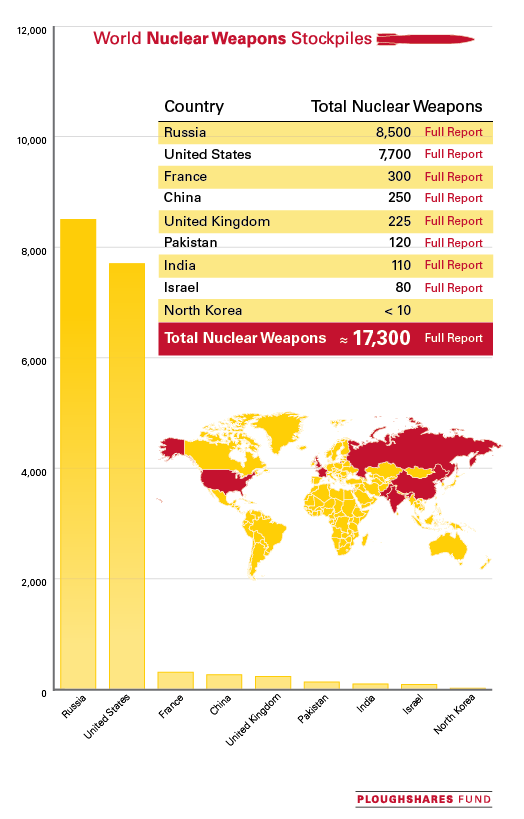Uploaded on Jul 22, 2010
Japanese artist Isao Hashimoto has created a beautiful, undeniably scary time-lapse map of the 2053 nuclear explosions which have taken place between 1945 and 1998, beginning with the Manhattan Project's "Trinity" test near Los Alamos and concluding with Pakistan's nuclear tests in May of 1998. This leaves out North Korea's two alleged nuclear tests in this past decade (the legitimacy of both of which is not 100% clear).
Each nation gets a blip and a flashing dot on the map whenever they detonate a nuclear weapon, with a running tally kept on the top and bottom bars of the screen. Hashimoto, who began the project in 2003, says that he created it with the goal of showing"the fear and folly of nuclear weapons." It starts really slow — if you want to see real action, skip ahead to 1962 or so — but the buildup becomes overwhelming.
The exact number of nuclear weapons in global arsenals is not known.
With little exception, each of the nine countries with nuclear weapons
guards these numbers as closely held national secrets. What is known,
however, is that more than a decade and a half after the Cold War ended,
the world's combined stockpile of nuclear warheads remain at
unacceptably high levels.

Hans Kristensen and Robert Norris of the Federation of American Scientists are the leading experts in estimating the size of global nuclear weapons inventories. The table is a compilation of their estimates and analyses, with links to their full reports. These reports are published in The Bulletin of the Atomic Scientists and discussed further at the FAS Strategic Security Blog.
As the authors of these estimates note, the above numbers may not add up due to rounding and uncertainty about the operational statuses and size of the total inventories. For a full analysis of how the authors arrived at their estimates, please view the provided links for the complete reports.
These huge stockpiles come at great financial cost to the countries that keep nuclear weapons. Even in the U.S., these costs area difficult to determine but, through careful analysis, Ploughshares Fund has released our best estimate of just how much nuclear weapons will cost the U.S. over the next ten years.
Updated November 4, 2013.

Hans Kristensen and Robert Norris of the Federation of American Scientists are the leading experts in estimating the size of global nuclear weapons inventories. The table is a compilation of their estimates and analyses, with links to their full reports. These reports are published in The Bulletin of the Atomic Scientists and discussed further at the FAS Strategic Security Blog.
As the authors of these estimates note, the above numbers may not add up due to rounding and uncertainty about the operational statuses and size of the total inventories. For a full analysis of how the authors arrived at their estimates, please view the provided links for the complete reports.
These huge stockpiles come at great financial cost to the countries that keep nuclear weapons. Even in the U.S., these costs area difficult to determine but, through careful analysis, Ploughshares Fund has released our best estimate of just how much nuclear weapons will cost the U.S. over the next ten years.
Updated November 4, 2013.

No comments:
Post a Comment